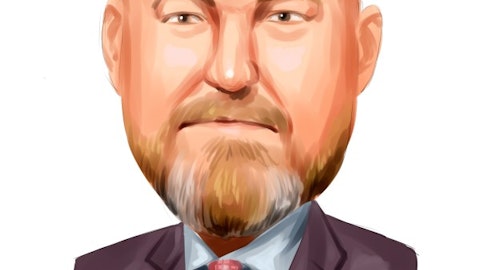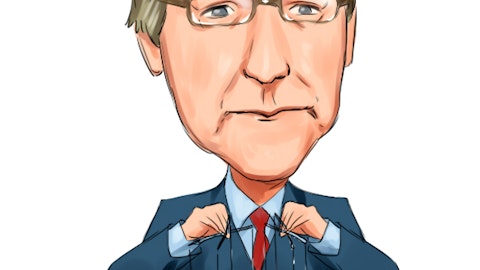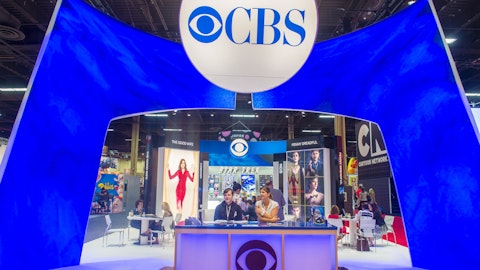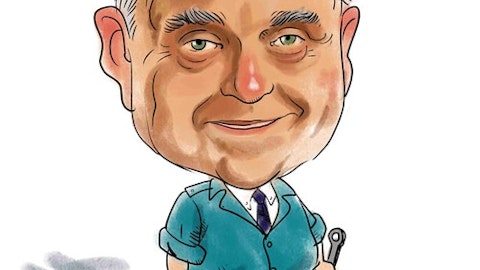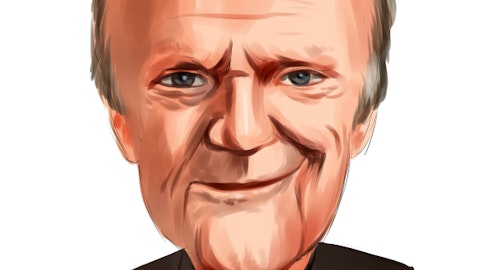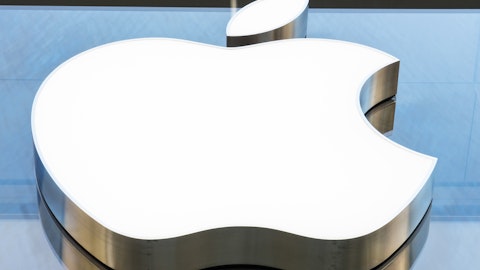Robert Raiff has been known for a long time for his investment in traditional value stocks, carefully selecting companies that have attractive cash flow and little or no debt. He is the manager of Raiff Partners, which is a hedge fund located in Midtown West, New York City. Raiff has vast experience in the financial markets, having worked for billionaire George Soros’ Soros Fund Management and C.J. Lawrence Inc. prior to that. His current hedge fund submitted its 13F to the U.S. Securities and Exchange Commission for the period of March 31, 2015. From the fund’s filing, it is clear that it has a diversified portfolio, although its top three sectors: technology, services, and healthcare, constituted 66% of its total holdings. The firm had $106.54 million in public equity portfolio value and more than $120 million in assets under management. The filing also reaffirmed Raiff’s confidence in Apple Inc. (NASDAQ:AAPL). The stock has remained atop its portfolio since the end of the third quarter of 2013, when it represented 15.53% of its total holdings at that time. At the end of the first quarter of 2015, the stock represented 20.32% of its holdings, with Raiff having upped his stake in the stock during the quarter. The question that many are asking is whether Apple Inc will ever be dethroned as the fund’s top investment, given Raiff’s appreciation for free cash flow and Apple’s abundance of said metric. We say…if it happens, it will take time. In this article, we look at the firm’s top three holdings, namely, Apple, and the two stocks closest to dethroning it, AT&T Inc. (NYSE:T), and Valeant Pharmaceuticals Intl Inc (NYSE:VRX).
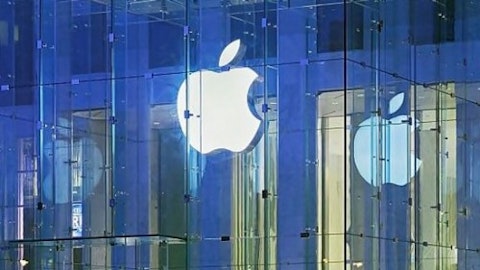
Raiff Partners is just one of more than 700 hedge funds that we have in our database, whose public equity portfolios we collate quarterly as part of our small-cap strategy. Even though most smaller investors believe that tracking 13F filings is a fruitless endeavor because they are filed with a delay of a maximum of 45 days after the end of a calendar quarter, the results of our research prove that is not the case. To be on the safe side, we used a delay of 60 days in our backtests that involved the 13F filings of funds between 1999 and 2012 and we still managed to gain an annual alpha in the double digits. Moreover, since the official launch of our strategy in August 2012, our small-cap strategy has obtained returns of more than 142%, beating the S&P 500 Total Return Index by greater than 84 percentage points (see the details).
Follow Robert Raiff's Raiff Partners
Like we mentioned above, Apple Inc. (NASDAQ:AAPL) remains Robert Raiff’s most-valuable holding. At the end of the first quarter of 2015, the fund held a total of 174,000 shares of the stock, with a market value of $21.65 million, having upped his stake by 7% from the previous quarter. The fact that the stock represents over 20% of its total holdings and the fact that its second biggest-holding, which is a new purchase, represents only 8.42% shows clearly that Raiff loves the stock and has a great deal of faith in it. There are several reasons why a fund would want to own part of the Cupertino, California-based technology company, unarguably the most popular and talked-about company in the world today. This year, Apple Inc. (NASDAQ:AAPL)’s shares have grown by over 15% thanks to the mammoth sales of the iPhone 6 and iPhone 6 Plus, with bigger screens. However, shares have stalled of late as investors seem to be unsure of where the company and its stock turn to for significant growth from here. The consensus now appears to be that the Watch’s sales will disappoint, and Apple is already prepping a Watch 2. And there’s the question of what the next big catalyst to push the next round of iPhone sales will be, now that bigger screens has been used up. Could the rumored self-healing screens that Apple is working on be that catalyst? Either way, with the aforementioned wads of cash at its disposal, Apple’s potential for growth is endless, even if the means to do so are relatively unknown at this time. At the end of the first quarter of 2015, billionaire Carl Icahn remained the biggest shareholder of the stock in our database, with 52.76 million shares followed by billionaire Ken Fisher’s Fisher Asset Management.
Although AT&T Inc. (NYSE:T) was one of Robert Raiff’s new purchases during the first quarter, it stood at number two in his portfolio, representing 8.42% of its total holdings. Raiff Partners held a total of 275,000 shares of the stock with a value of $8.98 million. The multinational telecommunications company has been receiving an array of positive analyst ratings of late, with a number of them touching on its merger with DirecTV (NASDAQ:DTV). The company also appears to have a bright future in Mexico, although this is expected to take some time to yield fruit. After studying the stock, Credit Suisse believes that the company’s synergy guidance of $2.5 billion still has potential upside. The opportunities that are available for AT&T Inc. (NYSE:T) are seen as openings for driving down costs, some of which will include lower content and expansion costs. Phill Gross and Robert Atchinson‘s Adage Capital Management, Arrowstreet Capital, and billionaire D. E Shaw’s D E Shaw were among some of the funds invested in the stock at the end of the first quarter.
Robert Raiff upped his stake by 8% in Valeant Pharmaceuticals Intl Inc (NYSE:VRX) during the first quarter of 2015 to bring it to number three in his top holdings. Raiff Partners held 43,000 shares of the stock with a market value of $8.54 million at the end of the quarter. The pharmaceutical company announced that it has submitted a New Drug Application to the U.S. Food and Drug Administration (FDA) for RELISTOR®, a methylnaltrexone bromide, which is a tablet for the treatment of opioid-induced constipation (OIC) in adult patients experiencing chronic non-cancer pain. The company is focused on expanding its services to emerging markets and is currently in advanced negotiations for the acquisition of Egyptian drugmaker Amoun Pharmaceutical Co. Its expansion strategy is mainly characterized by acquisitions, having also acquired Salix Pharmaceuticals Ltd. for $11.1 billion earlier this year. The company’s Xifaxan drug was recently approved by the FDA for treating adults with irritable bowel syndrome, adding momentum to its prospects. The stock became Bill Ackman‘s top new purchase in the first quarter and he was the biggest shareholder of it, owning 19.47 million shares at the end of the first quarter. This represented 25.83% of his total holdings. The second biggest shareholder was Jeffrey Ubben’s ValueAct Capital with 19.38 million shares.
Disclosure: None
